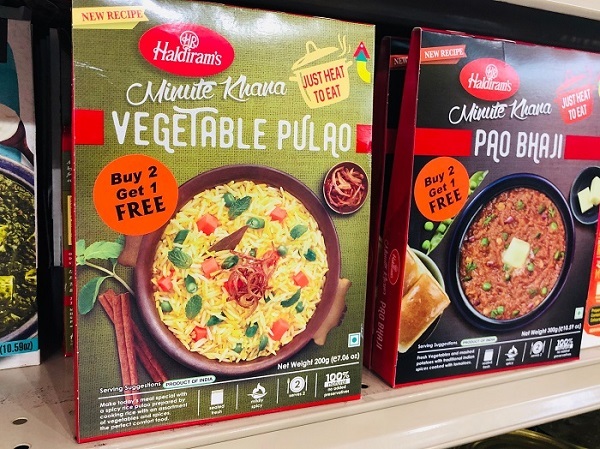
 Data Structure
Data Structure Networking
Networking RDBMS
RDBMS Operating System
Operating System Java
Java MS Excel
MS Excel iOS
iOS HTML
HTML CSS
CSS Android
Android Python
Python C Programming
C Programming C++
C++ C#
C# MongoDB
MongoDB MySQL
MySQL Javascript
Javascript PHP
PHP
- Selected Reading
- UPSC IAS Exams Notes
- Developer's Best Practices
- Questions and Answers
- Effective Resume Writing
- HR Interview Questions
- Computer Glossary
- Who is Who
How is the Cultural Trend in the Urban Market of India Changing, and What is Its Impact on the Business?
The urban market comprises more than 35.39% of India's population, as per the data for 2021. India as a developing country can be divided into three segments ?
Rural Indians
Semi-urban Indians
Urban Indians
In this article, we will be diving deep into the various characteristics of the niche population of the urban Indian markets and how firms can target them through their products and services.
An Overview of the Indian Urban Market Segment
Though the core values of Indians and the collectivist society approach remain the same across all geographical locations, we have currently seen cultural changes in the urban market segment. The urban market segment is largely influenced by the westernized world. Among the urban Indians, we can see a class of individuals who are highly salaried and professionally qualified. These individuals are different from the majority of Indians.
Characteristics of the Indian Urban Population
Achievement Orientation
The niche Indian urban consumers are achievement-oriented. For them, the only way to live is to thrive. This group of consumers is highly likely to purchase expensive branded cars, watches, trips to foreign lands, and memberships to prestigious clubs. For them, these goods are a mode of status symbolism. Here we are targeting both the self-esteem and self-actualization needs of human beings. These are needs that are both intrinsically and extrinsically generated.Titan brand ? The company launched its collection of corporate watches with the tagline "Be More." targeting the self-actualization and inner-directed needs of individuals along with their need to be recognized as someone elite because these watches do not come cheap.
One Plus mobile phones ? the tagline of the brand is "Never settle." This brand again targets the need of humans to never settle or be satisfied with what they have. The way to live is to improve, and that has been the core strategy of the brand. targeting the inner-directed and self-actualization needs of individuals.
Work Culture

Since the consumers we are targeting are professionally qualified and high-salaried people, it is natural for them to find partners of the same type. Now that both partners are working and their work environment is highly dynamic, overstressed, and fast-paced, consumers want ?
Ready-to-eat meals.
Fast food is available within minutes.
On-call services for daily chores like laundry, plumbing services, cleaning services, bill payments, and others.
Consumers would also want doorstep delivery of groceries and other items. Hence, we see the birth and bloom of companies like ?

Zomato, Blink it, and Swiggy ? These are all Indian-based companies that are famous for delivering food items, groceries, and daily rations to consumers at their doorstep within minutes of placing the order in the application. Companies are taking up space in the urban market and are hugely successful because of the dearth of time for urban consumers.
Pizza Hut, McDonald's, Taco Bell, Burger King, and KFC ? India wasn't a country that used to have maida and cheese in large quantities. We always believed in eating fresh, but with urbanization and both partners working, our population is hugely dependent upon these fast food outlets, which serve as a variety of westernized foods with Indian tastes in minutes.
ITC ready-to-eat meals ? ITC understood that though there are many fast food outlets coming up, Indian consumers will always crave their own food; hence, it came up with ready-mixed Gulab Jamuns, Rice Idli, Rava Idli, Aloo Mutter sabzi, Pindi Channa, Dal Makhani, and other packets.
Material Success

Young professionals in cities today are very different from young professionals a decade or two ago. These young professionals have wealth with them because of their high-tech jobs and almost no dependents on their income. Earlier, young adults had their parents, their wives, and their children as dependent individuals, but today, families are almost nonexistent with one kid. Consumers today are utilizing their wealth on convenience products, amusement services, health-related items, and time compression services. The individuals have babysitters, pet sitters, laundry men, and others at their doorstep for an easy life. Companies that have targeted the material success of consumers are ?
Urban Company ? The company provides cleaning, home decor, personal care, and other services to consumers through booking a slot on the online application. The main aim of the company is to provide consumers with all home and personal care services at their doorstep through a one-stop shop. The company is on trend and doing wonders as well.
Pet Backer ? This company provides consumers with all kinds of pet services. If you are too lazy to take your dog out for a walk or to bathe them, or if you want to give them a makeover or run them to the vet, Well, all these services are provided to consumers through this application. With just a phone call, customers can have trained professionals care for their pets.
Not too Traditional, not too Modern-Somewhere in the Middle
The consumers belong to a higher socio-economic background but are still Indian at heart. Hence, they are not too ritualistic, traditional, or orthodox, nor are these consumers too modern to lose all their touch and memories of the past. The consumers carve out time for the home-cooked, warm meal but are too tired and busy to do the same because both partners are working. Companies that have targeted this consumer need include ?
Ashirvad, iD, Haldirams ? These brands are coming up with frozen chapatis for consumers. Consumers can prepare just one vegetable curry at home and enjoy it with the warm chapati served by the companies.

Haldirams, Tata, Dawat, and Ganesh ? these brands are offering Indian cuisine in ready-to-cook packets. Customers would not have to be concerned about the combination of various spices and food ingredients. The company has packed them in small pockets, sufficient for one, and they are easy to cook with a standardized taste. Consumers can enjoy home-cooked Indian cuisine in minutes with these brands. Some examples are biryani, cake, Gulab Jamun, Jalebi, Dhokla, and others.
MDH Masala ? These brands sell the consumer a mixture of different spices that could be used while making Indian delicacies like paw bhaji, chole bhature, sambar, and others. They offer consumers good taste with no hassle. One such packet is always available in most urban and semi-urban Indian households.
Hi-Tech Products
This group of customers is technologically savvy and views new updates or modifications as benefits that will make their lives easier rather than a hassle. They believe in having the newest technologies when it comes to cell phones, laptops, desktops, music systems, home appliances, Bluetooth devices, and others. They are willing to pay for the latest technology in installments or as a one-time payment, depending on their income level, but will make sure they have it. Neo-young adults invest in them more than adults in the age group of 25-35. Businesses should target these consumers either through social media or through relationship marketing strategies.
The Indian urban market segment is moving towards the westernized world with Indianness in its heart. It is a great time for the travel and tourism industry, healthcare industry, technological industry, and luxury industry to target them and their niche market needs.

